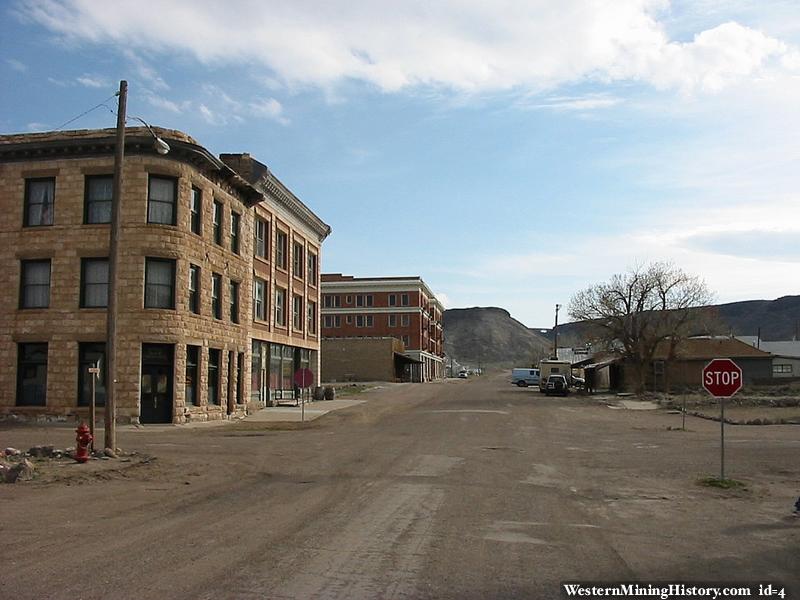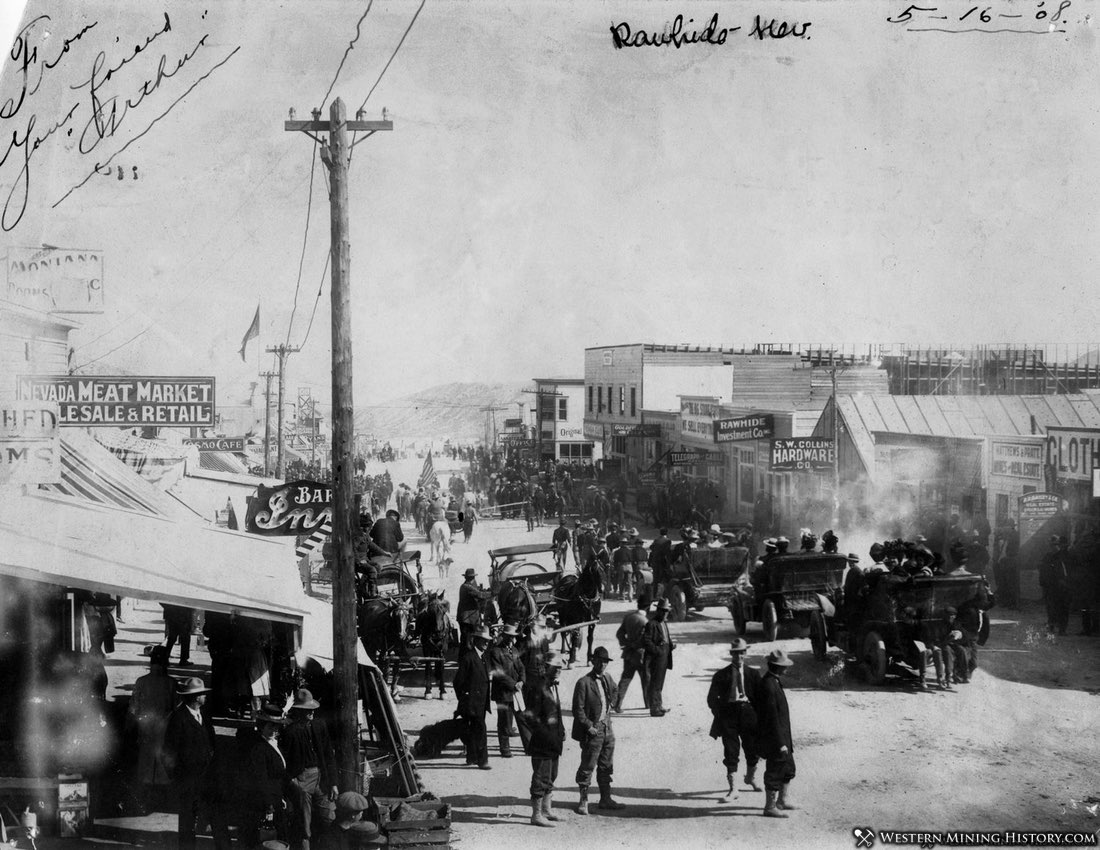The first decade of the 1900s was an exciting time for the state of Nevada. Most mining rushes were over in the West, but Nevada had numerous new discoveries during this time. Mining booms occurred that resembled the great excitements of the 1860s and 1870s, and mining camps quickly developed into fantastic cities.

The greatest of these rushes were at Goldfield, Tonopah, Rawhide, and Rhyolite. The following are some before and after photos that illustrate the dramatic rise and fall of these great camps.
Goldfield
Goldfield, Nevada was founded in 1902 after rich gold discoveries. following photos show what Goldfield looked like in 1903.

Goldfield was not much more than a collection of canvas tents and crude buildings in 1903. The gold mines here were extremely rich however, and a new gold rush was about to get started.

Within a few years substantial buildings of brick and stone were being built. The image below shows the Goldfield News building and the famous Goldfield Hotel, which still stands today.

The following photo illustrates the explosive growth that Goldfield experienced by 1907. What was built in just a few years is almost impossible to believe.

Goldfield would become one of the West’s most dramatic boom and bust stories. It quickly became Nevada’s largest city with a population of over 20,000. The richest gold deposits proved to be shallow and were worked out by the early 1910s.

A catastrophic fire in 1923 burned most of the city to the ground. However, for those few years from 1906 to 1909, this was one of the liveliest cities in America.

Tonopah
Tonopah, Nevada was the site of a major silver discovery in 1900. The town became Nevada’s largest silver producer in the first decade of the 1900s. Thousands of people poured into the area in the first few years, making Tonopah Nevada’s first boom town of the new century.
In 1901 Tonopah was a modest tent camp as shown in the following photo.

By 1903 the mines of Tonopah had become internationally famous, and the town was booming. The following photo illustrates a typical street scene during this period.

Although the town was quickly being modernized, some miners continued to live in their improvised homes, as seen in the image of the Tonopah barrel house below.

By 1907 Tonopah had grown into one of the West’s premier mining cities with five banks, numerous hotels, an opera house, electric and water companies, and several newspapers. The business district was rapidly developing with substantial buildings of brick and stone, some as tall as four and five stories.

The following photo of a wagon packed with crates of expensive champagne illustrates that Tonopah was experiencing very good times.

Tonopah is still an active town of about 2,500 people and is the county seat of Nye County. Many historical buildings from the mining boom years remain intact.

Rawhide
Discovery of gold in 1907 resulted in a mad rush to the new town of Rawhide, Nevada. The following photo was sent to us by William Redak who included the following text with the image:
“The inscription on the upper left was put there by my great uncle Arthur Sweet. Uncle Arch was a mining engineer who spent most of his life in mining towns in Nevada and Colorado, with a little time in Arizona and Mexico for good measure”

Not long after the photo above was taken, a fire devastated Rawhide, as seen in the photo below.

As with most mining boom towns, fire was merely a temporary setback and Rawhide was quickly rebuilt.

Ultimately the Rawhide excitement ended up being more about speculation than actual riches coming out of the mines. By 1910 most of the town had moved on to new districts. Today the townsite has been consumed by a modern open-pit mine.
Rhyolite
Rhyolite, Nevada was the location of a gold rush starting in 1905. By 1908, when the following photo was taken, Rhyolite had become a city of several thousand people.

This 1909 photo shows the famous Cook Bank building, Rhyolite’s most prominent structure (seen in the center of the photo above).

Prosperity was short-lived for Rhyolite and by 1920 it was a ghost town. The following photo shows what the Cook Bank Building looked like in 1909.

The ruins of the Cook Bank building in Rhyolite is one of the most photographed structures in the West.

Today a few empty buildings and many ruins are all that is left of Rhyolite. The ghost town is a popular tourist destination.
Nevada Mining Photos
Check out this collection of some of Nevada’s best historic mining scenes at A Collection of Nevada Mining Photos.
Gold Districts of Nevada
Nevada has a total of 368 distinct gold districts. Of those, just 36 are major producers with production and/or reserves of over 1,000,000 ounces. Just 15 districts are considered to have been significant placer gold producers. Gold Districts of Nevada takes a look at the state’s most important gold mining districts.

